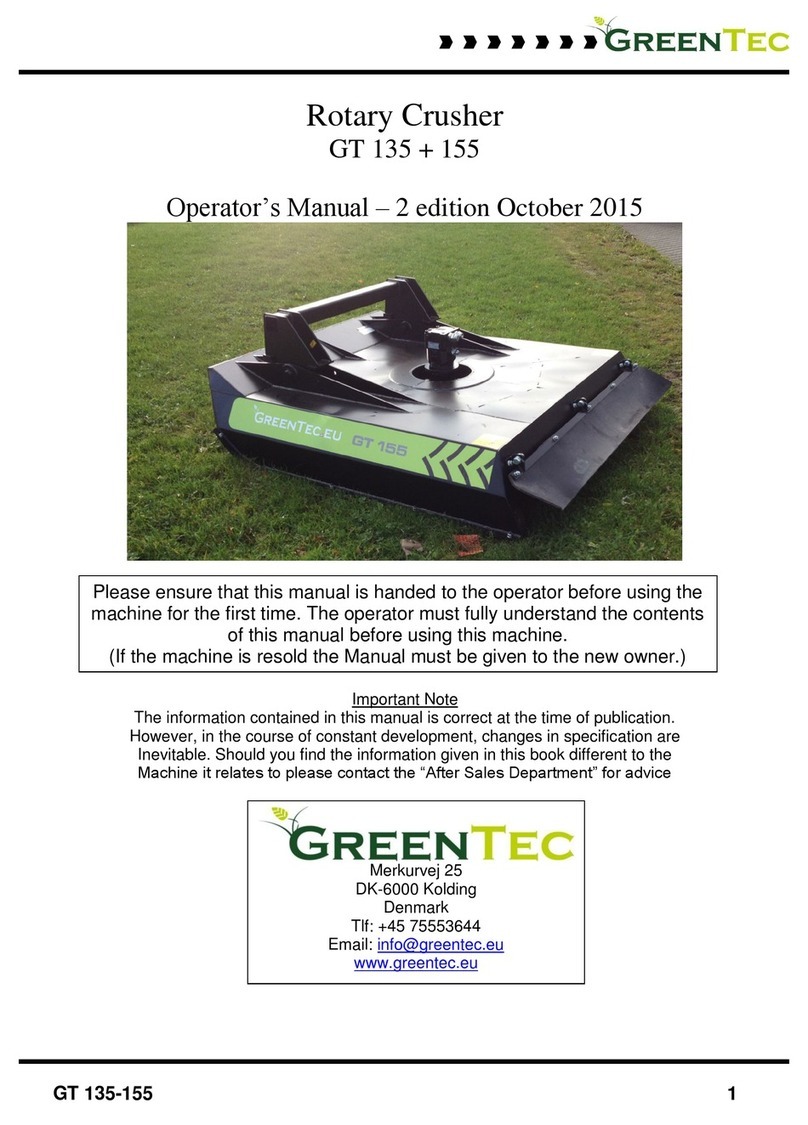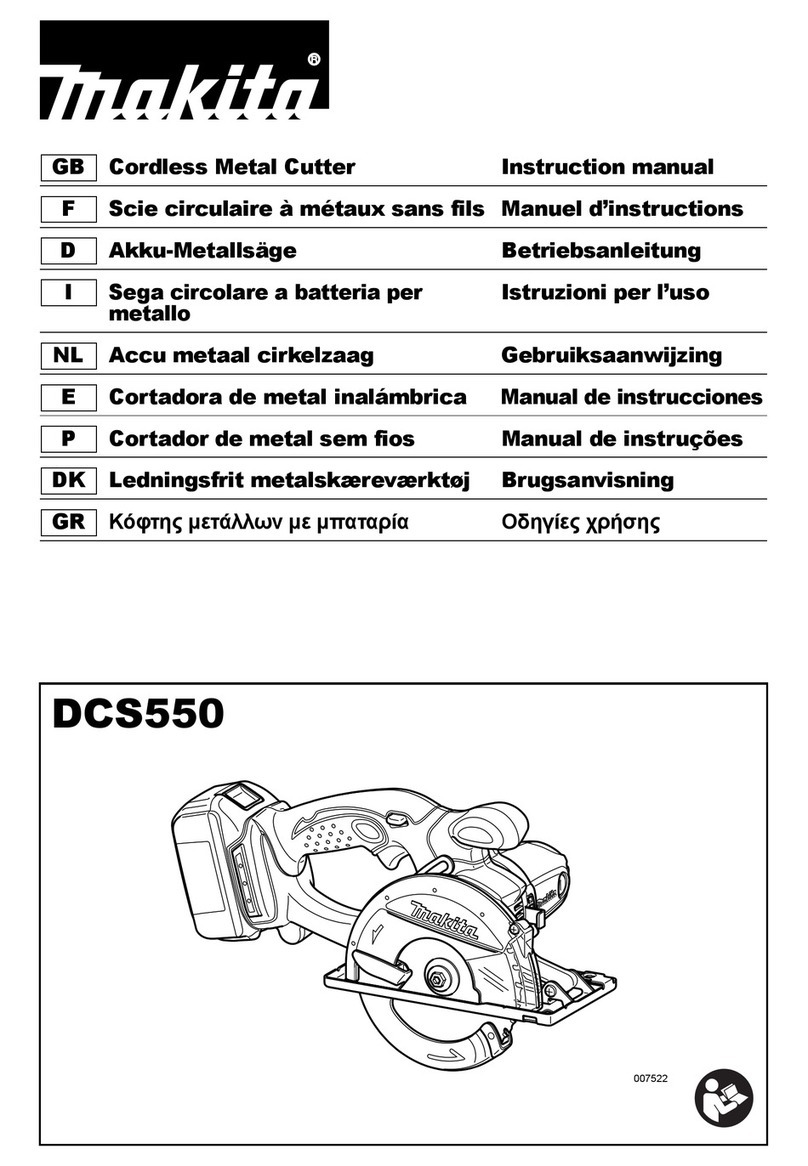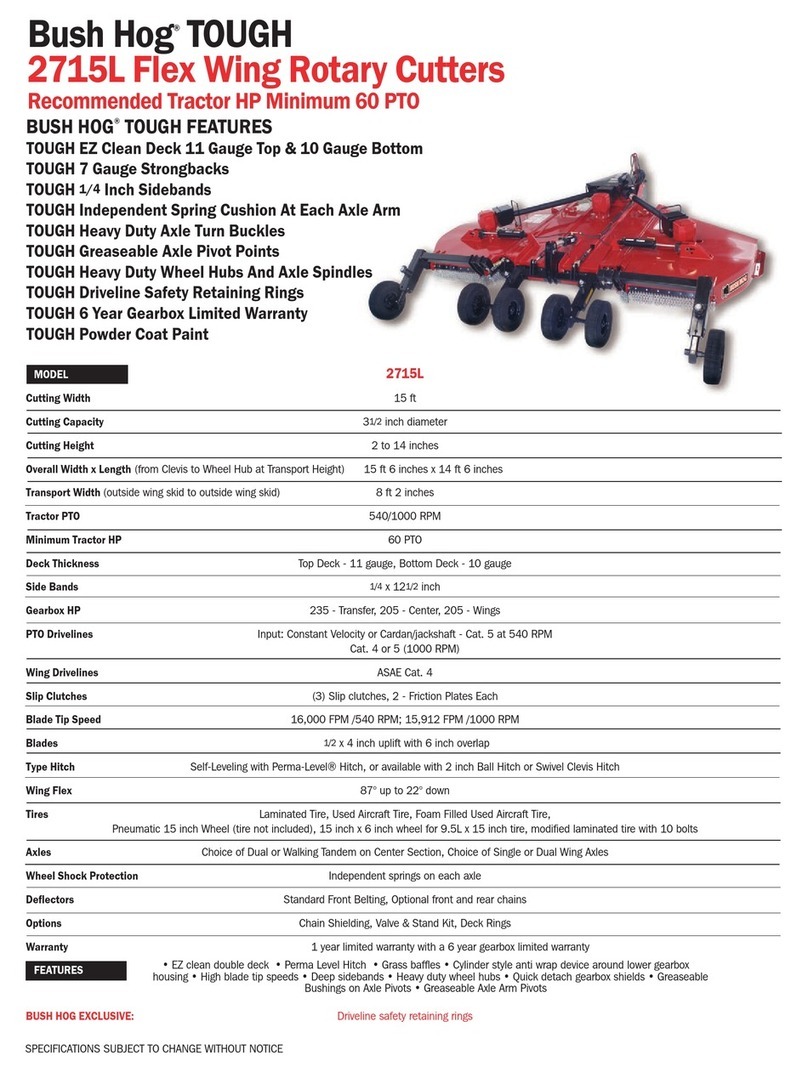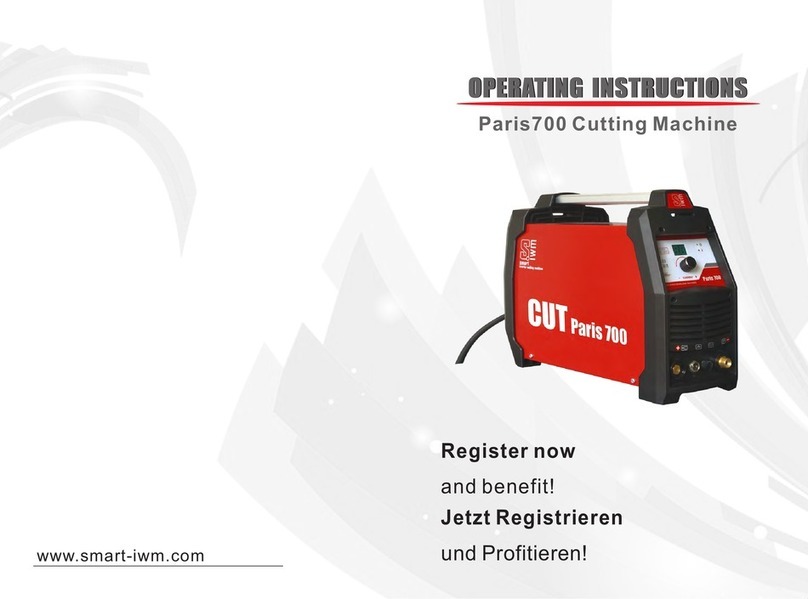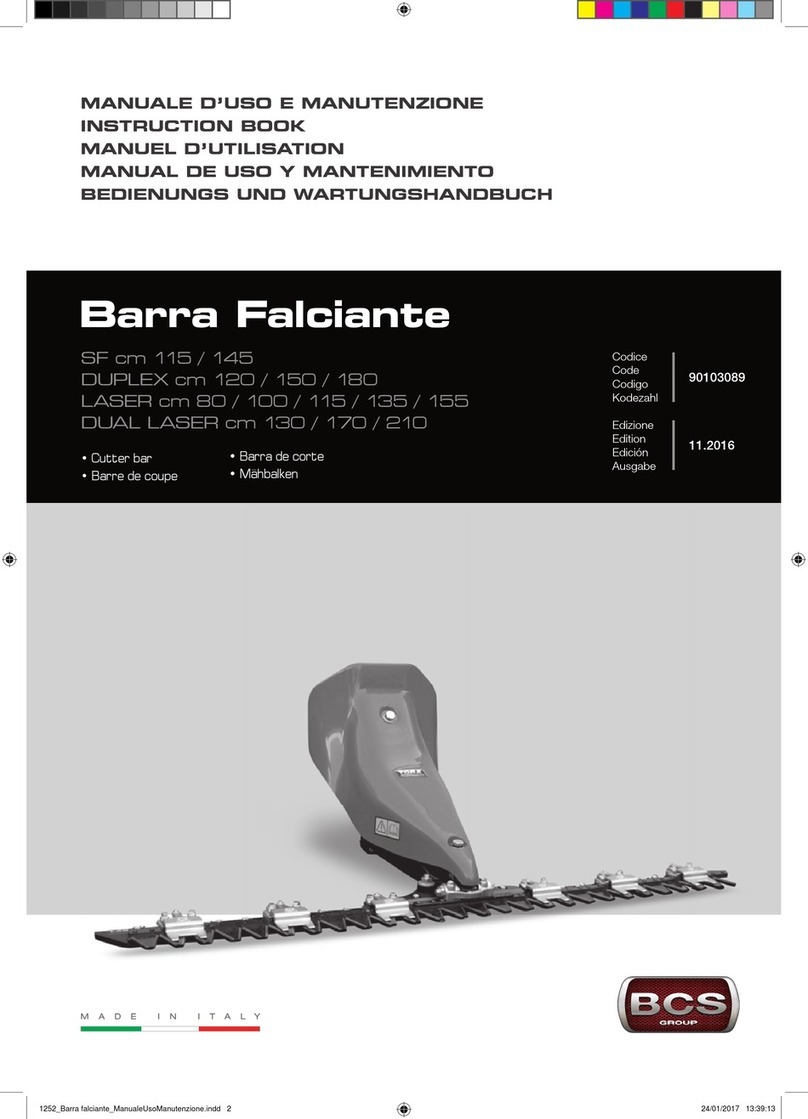GMP Apollo Lasher Installation guide

1
Apollo Cable Lasher
Operation and Maintenance
All rights reserved. No part of this publication may be copied, reproduced or
transmitted in any form whatsoever without the written permission of General
Machine Products Co., Inc.
General Machine Products Co., Inc. • 3111 Old Lincoln Hwy • Trevose, PA 19053 • USA
TEL: +1-215-357-5500 • FAX: +1-215-357-6216 • www.gmptools.com
General Machine Products Co., Inc.
Manual P/N 30757 ver 3
AK 10-2016
U.S. Patents: 6,062,542 and 6,389,989

2
Apollo Lasher
REVISION HISTORY:
Rev Date Details Author
01 Original issue Adspeak
02 07-2013 Revised format for clarity
Removed repair parts A. Konschak
03 10-2016 Updated procedure for
opening door A. Konschak

3
1.0 General
This manual covers the care, operation and maintenance of your GMP
Apollo cable lasher, which you can use to lash cables up to 3.5 in.
(89mm) dia. to suspension strand, or smaller cable sizes to an existing lashed
cable and strand. The Apollo has the capability to lash up to a 4 in. (100mm)
bundle of any assortment of innerduct, fiber, copper and coaxial cables as
well. The strand sizes range from .25 to .38 in. (6 to 10mm) diameter, inclu-
sive.
This machine is intended for use only by properly trained journeyed
lines-people or other craftspeople under the direct supervision and responsibil-
ity of those individuals.
As such, this manual’s scope is specifically limited to the machine’s functions,
and no attempt is made to describe the proper procedures for placing and lash-
ing aerial cable plant.
We cannot be held liable for any direct or indirect consequences arising from
use of this product by any individuals not already properly trained in its use.
The following conventions will be used in the manual:
Warnings - must be followed to avoid bodily injury.
Cautions - must be followed to avoid damage to equipment
Notes - contain important information and useful tips on the operation of your
Apollo lasher.
2.0 Precautions
2.1 Observe the following precautions when operating the Apollo lasher.
Read all of the instructions and save them for later reference. Before begin-
ning any cable work, first check the cable run you want to make in order
to find out what local conditions might be while you are lashing. Among the
factors you should look for are:
● vehicle and pedestrian safety
● conditions of poles, anchors, guys and strand
● proper bonding and grounding of strand and attachments
● obstructions such as trees, limbs, and drop wires
● clearances and separations on poles shared by other utilities
● clearances over roads, driveways, walkways and crossings
Table of Contents
1.0 General Page 3
2.0 Precautions Page 3
3.0 Description Page 4
4.0 Operating instructions Page 7
5.0 Troubleshooting Page 18
6.0 Maintenance Page 19
7.0 Options and other information Page 20
8.0 Layout Page 22

4
Apollo Lasher
Protect
your work site with
advance signaling devices
at
strategic
points
to
warn
traffic and
pedestrians
of any
obstructions
in the
area.
Check your Apollo
lasher
first! Before
using
your
machine,
check
to
make
sure it is in good
repair,
and all of the
parts
and
mechanical
as-
semblies
are
intact
and in good
working order.
If your
machine
is
not
properly maintained,
it
might
be
unsafe
to use and pose an
unneces-
sary
risk to both you and the
property
and
personnel
in your work
area.
In case your Apollo
lasher
ever
needs attention,
you
should forward
it
to
our
Lasher Department
so it can get a
professional repair and/or
over-
haul.
(In case you are c
oncerned about downtime,
you
should
know our
Department
is set up to give you the
fastest possible
turna-
round.)
Use the
proper safety equipment!
Before
working
aloft,
inspect
all
your
climbing
and
safety equipment
to
make certain
it is in good
re-
pair. And
while you are aloft,
ALWAYS
wear a
safety
belt with a
safety
strap
securely attached
to help
prevent
you from
falling. Ensure
the
rear
verti
cal cable
rollers
are set to their
widest opening before placing
the
lasher
on the side of a
bucket.
Also, you
should always raise
and lower the Apollo
lasher
with a
hand-
line or a
truck
lift. Use the bridle
assembly
at pole
transfers! When
transferring
your
lasher around
a pole or
obstruction,
use the
bridle
assembly
as a
tether
to
prevent damage
to the
machine
in case it
is
dropped.
Doing this lets you
concentrate
on your own
safety rather
than
that of the
machine.
Avoid
abuse
or
rough handling
of the Apollo
lashers
and never
drop
your
lasher.
Keep your
lasher
in its
protective
case
when
not in
use.
Protect
your
lasher
from
unnecessary exposure
to dirt, grit and
any
other foreign matter
.
Avoid
placing
the Apollo on the
ground whenever possible.
3.0
Description
3.1
General
The
following features make
your Apollo
lasher
an
outstanding
value:
●
parallel
pull
capability
●
lightweight
● big
bundle capacity
●
constant tension
in the
lashing wire
●
rotation section rotates
in a
single direction

5
Look at your Apollo
lasher
for
a
mo-
ment.
You will see it
consists
of
a
rotating section supported
on a
sta
tionary carriage:
the
strand
and
cable
pass through
this
stationary
carriage
during
the
lashing opera-
tion.
As you look at the
carriage
you
will
see it has cable and
strand rollers,
front and rear
gates, towing bracket
and an
anti-backroll strand
roller
on
the
front.
The
components
are
made
from
a
variety
of
materials,
each
selected
to
provide
specific
properties.
Some
of
the
materials
are
heat-treated
alu
minum alloys, magnesium,
carbon
and tool steel as well as
engineered
polymers.
There are ball
bearings or needle bearings
on the
drive
shafts
and
rotating sections.
Sintered metal
bearings
are
used
on
other mov
ing
parts.
The
machine weighs approximately
46 lbs
(20.9kgs.) without
wire
and
provides
an
outstanding strength/weight
ratio while
providing
an
exceptionally
long
service life.
Note: Please see
figures 31, 32, 33,
and
34.
3.2 Cable
capacities
You can use the Apollo to lash a
single
cable of
almost
any type,
includ
ing
telephone
and
fiberoptic
cables up to 3.5 in. (89mm) in
diame-
ter
.
The Apollo has the
capability
to lash up to a 4 in.
(100
mm)
bundle
of
any
assortment
of
innerduct,
fiber, copper and
coaxial
cables as
well.
The
strand sizes range
from .25 to .38 inch
diameter (6.6M,
6M,
10M)
or
6mm
through
10
mm.
3.3
Lashing wire
The Apollo
lasher
has two
magazines
for
loading lashing
wire, each
can
hold a
5.38
in.
(137
mm) dia. by
1.81
in. (46mm) high wire coil.
Y
ou
can
use
either
of the
standard
wire coil
sizes
in the
magazines: 1,200
ft.
(365
m) of
.045
in.
(1,14
mm) dia. and
1600
ft.
(488
m) of
.038
in.
dia.
(0,97
mm)
annealed stainless
steel wire.
Wax-coated
wire is not
a
requirement, however,
oiled wire is not
recommended.
Figure
3
Figure
2

6
Apollo Lasher
Your lasher can use a single wire or two wires simultaneously (also known as
“double lashing”). Like other GMP lashing machines, the balance of the
Apollo is not affected by the amount of wire loaded in either magazine.
Each magazine has two rollers for guiding and tensioning wire during lashing.
The wire tension is developed by the routing of lashing wire and not the ten-
sion on the spool. The wire coils mount on a reel attached to the rotating drum.
There is a non-adjustable tension on the reel to prevent overspinning. The
lashing wire exits the tensioning rollers and enters the drive mechanism.
3.4 Drive mechanism
The Apollo is driven by the lashing wire exiting the machine so the lasher can
be pulled from any direction. The lashing wire rotates drive wheels that are
interconnected by a shaft so either single lashing or double lashing will rotate
the lasher. A set of pinion gears drive a segmented ring gear and this configu-
ration is the time-tested design found on other GMP lashers. The direct drive
design eliminates the possibility of slippage.
A one-way clutch in the drive wheel of the gearbox assembly enables the rota-
tion section to rotate in a single direction while lashing. This configuration
allows the lashing wire to remain tensioned when forward motion of the lasher
has ceased. The rotation section of the lasher can be manually rotated in the
opposite direction by actuating the handle to de-clutch and disengage the drive
wheel.
3.5 Adjustable rear gate and cable lifter
The rear gate is adjustable by the use of a D shaft and locking collar. The rear
gate is easy and fast to use and the locking collar provides a positive lock to
keep the rear gate in place. To open the rear gate, push the button and the rear
gate rotates to its open position. When the rear gate is open, the rotating drum
will automatically lock in its detented position when the pin registers with the
receptacle in the rotating housing. The pin is retracted from the receptacle in
the rotating housing when the rear gate is closed.
3.6 Front gate
The front of the Apollo is designed to provide the maximum in cable protec-
tion. There are 4 rollers to help prevent cable damage regardless of cable ori-
entation. The top roller has two one-way clutches that ensure the lasher only
moves in the forward direction, providing anti-backroll capability. The bottom
roller pivots out of the way for easy cable installation into the lashing machine,
and locks positively in place for the cable lashing operation. There are two sets
of towing eyes for the Apollo for pulling in any direction. The top set of holes
is most suited for parallel pulling and normal operation and the bottom set is
most suited for situations requiring more sideward or downward pull.
3.7 Bridle assembly
The Apollo lasher is supplied with a bridle assembly that resists rot. The 5 foot
long rope assembly is equipped with a forged snap hook at each end and a
floating forged steel ring between the snap hooks for the attachment of a suita-
ble towing line. The bridle assembly also provides a safe and easy method to
tether the Apollo while moving it around a pole or obstruction.

7
4.0 Operating instructions
4.1 General
As mentioned at the beginning of this manual, you should never operate a
lasher unless you’ve been properly trained in advance or are being directed by
a properly trained linesperson who is responsible for your work. However,
you should find this section of the book helpful in outlining the correct
sequence of steps to take in using your Apollo lasher.
4.2
Preparing
a
lashing
wire
coil
The first step in any
lashing opera
tion is to
prepare
the
lashing
wire
coil. Note: It is
important
that the
lashing
wire is loaded
properly to
ensure
proper lasher
operation.
1. If the
lashing
wire is
wrapped
with
wire ties,
rotate
the
head
of
the
wire
tie
attached
to the looped
end
of
the
lashing
wire to the
center
of
the
coil (see
figure
4). This
will
facilitate
the
cutting
of the wire
tie
in a later
step and help
ensure
that
the
com-
plete
wire tie is
removed.
2. Do not cut all of the cable ties!
Leave the cable tie
attached
to
the
looped end of the
lashing
wire, and cut the
remaining
3 cable ties
on
the
lashing
wire
coil.
3. Cut the looped end of the wire on the
inside diameter
of the wire
coil.
This step will help in the
loading
of the coil onto the hub and
subse
quent steps.
4.3
Install
the
prepared
wire
coil
The
proper installation
of the wire coil is a
must
for
hassle-free
lashing.
Many of the
problems
in
lashing
can be
traced
to
improper
preparation
of the
lashing
wire
coil.
1. Open the cover with a
screwdriver
.
Turn
the fastener
1/4
turn
(counter-
clock wise)
until the
fastener
un-
seats.
The
spring loaded
cover
should
open to
expose
the
lashing
wire
reel.
Figure
4
Figure
5

8
Apollo Lasher
Figure
6
Figure
7
Figure
8
2.
Verify that the
adjustable
tension
roller is in the correct
position for
the type of
lashing.
The
roller
should
be
in the
lower-most
position
for
normal lashing wire
tension, including lashing
broadband coaxial cables.
The
roller
should
be in the
upper
-
most position
for
higher lashing
wire
tension.
3.
Depress
the reel
brake
into
cutout
on rear
flange.
Unscrew
and
remove
the
wire reel cover
and
slide the
lashing
wire coil over
the
hub
and onto the reel
making
sure that it spools out to the
rear of the lasher as shown
by arrow.
4.
Install
the wire reel cover
and
thread completely
onto the
reel
until snug
against
the wire coil.
It
is
important
to
ensure
that
the
reel
cover is tight
against
the wire
coil
to
prevent
the
lashing
wire
from
“snagging”
on
itself.

9
5. Hold on to the looped end of the
coil. Cut and remove the remain-
ing cable tie and then continue to
snug the reel cover against the
wire coil ensuring a tight fit. The
reel brake can be depressed into
cutout on rear flange to hold the
reel stationary as you tighten the
reel cover.
Figure
9
Figure
11
Figure
12
Figure
10
Make certain that the head or knot on
the cable tie is not pulled through the
coil and that the entire cable tie is re-
moved, because portions of the cable
tie may cause snagging of the lashing
wire.
Note: As a check for proper cover tight-
ness, at least 1 full thread on the hub
should be exposed after the wire reel
cover has been installed and tightened.
7. Feed the wire behind the sec-
ond tension roller (top roller).
Pull the wire out from behind
the roller.
6. Make a hook with the end of
the lashing wire. Feed the
wire over the first tension
roller (bottom roller).
8. Pull up on the handle to de-
clutch and disengage the drive
wheel.

10
Apollo Lasher
Figure
13
Figure
15
Figure
14
Figure
16
9. Feed the wire into the drive
wheel from the rearward
direction so the wire moves
around the drive wheel
toward the front of the lasher.
10. Continue feeding wire until it
exits the drive wheel. The
wire exiting the drive wheel
must be below the wire
entering the drive wheel.
11. Pull up on the handle to dis-
engage the drive wheel and
feed wire into the exit rollers
on the end of the machine.

11
12. Ensure the wire is captivated be-
tween the roller and the housing.
13. If more wire is needed, disengage
the drive wheel to pull out more
lashing wire. (See Figure 15)
14. Close the cover and using a screwdriver, tighten the fastener (clockwise)
1/4 turn until the fastener seats and can’t be tightened further. Ensure that
the cover is secure to the hub.
4.4 Lashing to bare suspension strand
1. Check the lashing wire coils to ensure there is enough lashing wire for the
span, if the lashing wire wasn’t loaded recently.
2. Lower the rear gate to its lowest
position. Ensure that the rear gate
is open and the drum is locked in
position.
3. Set the rear vertical cable rollers to
their widest opening.
4. Open both the front and rear strand
locks by pulling up on the release
knob. There should be an audible
“click” when the locks travel from
the locked position to the open
position. (See Figure 18)
5. Open the front gate by actuating
the release lever towards the front
of the lashing machine. The roller
on the front gate will pivot 180
degrees and out of the way.
6. Attach a handline to the lasher
handle and raise the lasher to the
strand. Attach one of the lasher
bridle snap hooks to one of the
lasher towing eyes. Attach the
other snap hook to the strand to
serve as a tether.
Figure
17
Figure
18
Figure
19

12
Apollo Lasher
7. Place the lasher on the strand and ensure that the strand is centered in the
grooves of both of the front and rear rollers.
8. Close the front strand locks by
depressing simultaneously on both hooks
until audibly and visibly locked.
9. Close the rear strand locks by
simultaneously depressing on both hooks
until audibly and visibly locked. The lasher
is now secured to the strand.
10. Using the proper cable raising procedure for your application, lift the cable
or cables up to the strand, close the front gate and let the cable(s) rest on
the horizontal roller.
11. Adjust the position of the vertical rollers on the rear gate so that they
barely touch the sides of the cable(s). This step will have to be done every
time the bundle size changes.
12. Close the rear gate until it locks in its detented position.
13. Raise the rear cable lifter by pushing up on the bottom of the lifter that
contacts the D shaft. The lock doesn’t have to be activated to raise the
cable lifter. If the rear cable lifter is too high, press the locking lever to
lower the rear cable lifter and try again.
14. Now the final steps. Pull up on the handle to de-clutch and disengage the
drive wheel to pull some lashing wire from the lasher. Secure the lashing
wire to the strand by using a GMP D or E
lashing wire clamp. Attach the bridle
assembly to the towing eyes on the Apollo
lasher and you are ready to lash.
See section 4.6 for more information on ter-
minating lashing wire.
Figure
20
Figure
21

13
Figure
23
4.5 Over-lashing procedure
Here is the proper way to overlash onto existing cable installations using the
Apollo lasher:
1. Check the lashing wire coils to ensure there is enough lashing wire for the
span.
2. Lower the rear gate to its lowest position by fully depressing the thumb latch
and sliding the roller down. Ensure that the rear gate is open and the drum is
locked in position.
3. Open both the front and rear strand
locks by pulling up on the release knob.
There should be an audible “click” when
the strand locks travel from the locked
position to the open position. The strand
locks aren’t used in the over-lashing
procedure and should remain in the open
position.
4. Open the front gate by actuating the
release lever towards the front of the lash-
ing machine. The roller on the front gate
should pivot 180 degrees and out of the
way.
5. Attach a handline to the lasher handle
and raise the lasher to the strand.
6. Attach one of the snap hooks on the lasher bridle to one of the towing eyes.
Attach the other snap hook around the strand and existing cables to serve as a
tether.
7. Place the lasher on the strand and ensure that the strand is centered in the
grooves of both of the front and rear rollers.
8. Using the proper cable raising procedure for your application, lift up to the
strand the cable or cables you want to lash, close the front gate and let the
cable(s) rest on the horizontal roller.
Figure
22

14
Apollo Lasher
9. Raise the rear cable lifter by pushing up on the bottom of the lifter that
contacts the D shaft. The thumblatch doesn’t have to be activated to raise
the cable lifter.
10. Adjust the position of the vertical rollers so that they barely touch the
sides of the cable(s). This will have to be done as the bundle size changes.
See section 4.6 for more information on terminating lashing wire.
11. Now the final steps. Pull up on the
handle to de-clutch and disengage the drive
wheel to pull some lashing wire from the
lasher. Secure the lashing wire to the strand
by using a GMP D or E lashing wire clamp.
Attach the bridle assembly to the towing
eyes on the Apollo lasher and you are ready
to lash.
4.6 Lashing wire termination
4.6.1 General
A common cause of lashing wire failure is improper termination. The
following steps outline the suggested method for proper lashing wire
termination.
1. Lashing wire termination should be accomplished and cable supports
installed as soon as practical after the cable is placed.
2. Measurement marks made in making terminations should be made on the
strand rather than on the cable sheath. Avoid scoring the cable sheath with
the lashing wire end when terminating lashing wire.
3. Cable guards should be used to prevent abrasion of the cable sheath where
the separation is less than 1/2 inch between the cable and suspension
clamps.
While the D lashing wire grip and D and E lashing wire clamps may be used
on strand sizes up to and including 7/16 in (11mm) (16M) or larger, the
discussion on lashing wire termination will only cover the strand sizes of .25
to .38 in. diameter (6 to 10mm) (6M, 6.6M and 10M), the only strand sizes
compatible with the Apollo lasher.
Figure
24

15
4.6.2 Lashing wire termination
1. Secure the lashing wire to the strand with a lashing wire grip before cutting
or otherwise releasing tension in the lashing wire. The lashing wire grip should
be placed far enough from where the supports, spacers and lashing wire clamps
are to be installed to avoid having to move the grip.
Note: The situation can exist where the .038 in. (0,97mm) dia. lashing wire
may nest in the space between the wires of the 10M strand. Ensure that the D
lashing wire grip is securely contacting both the lashing wire and the strand to
prevent loss of tension in the lashing wire.
4.6.3 Lashing wire clamps
Figure 25, D Lashing Wire Clamp
1. The D or E lashing wire clamp may be used with .038 (0,97mm) and .045
(1,1mm) dia. lashing wire on strand sizes of .25 to .38 in. (6 to 10mm)
diameter (6M, 6.6M and 10M).
2. The nuts of the clamp are tightened and loosened with the 7/16 in. end of a
216C tool or B ratchet wrench.
Figure 26, Terminating Lashing Wire
4.6.4 Terminating lashing wire using D or E lashing wire clamps
See figure 26 for steps 1, 3 and 4.
1. The lashing wire clamp should be located 2 inches outside of the first lashed
cable support or cable suspension clamp. The lashing wire should be wrapped
twice around the strand and then terminated on the cable lashing clamp.
Clamping Nut
Threaded Stud
Grooved Plates 2nd Washer 1st Washer
Shoulder
Form the end of the lashing wire
around the end of the clamp as shown

16
Apollo Lasher
See figure 25 steps 2, 3, 5 and 6.
2. Terminate one lashing wire using a lashing wire clamp by placing the wire
below the stud and between the second washer and stud shoulder.
3. Remove any slack in the lashing wire by maintaining tension on the wire
and tapping the strand sharply. Form the wire over the stud and tighten the
nut. Cut the free end of the lashing wire off 1/4 in. (6mm) beyond the end
of the clamp.
4. Form the end of the lashing wire 90 degrees around the end of the clamp
to minimize exposure of the free end of the lashing wire.
5. Terminate a second lashing wire (if used) with the D lashing wire clamp as
outlined above; however, temporarily clamp the first lashing wire using a
D lashing wire grip to maintain lashing wire tension.
6. Loosen the nut on the lashing wire clamp and terminate the second lashing
wire between the first and second washers. Tighten the nut to complete the
termination.
7. Remove the D lashing wire grip(s).
4.7 Moving your lasher around a pole
When you need to move your Apollo lasher around a pole or other obstruction,
follow these steps.
Figure 27
Warning: While aloft, ALWAYS wear a safety belt with a safety strap securely
attached to help prevent you from falling.
Caution: Ensure the rear vertical cable rollers are set to their widest opening
before placing the lasher on the side of a bucket.

17
1. Before doing anything, make sure you are working from a secure
perch where you can safely move your Apollo lasher without
overreaching. This is extremely important.
See section 4.6 for more information on terminating lashing wire.
2. Clamp the lashing wire to the strand.
3. To pull a length of lashing wire from the Apollo lasher without rotating
the drum, actuate the de-clutch lever and pull out enough lashing wire
from your machine so you can terminate it with a clamp or continue lash-
ing past the obstruction.
4. Attach one of the lasher bridle snap hooks to a lasher towing eye on the
front of the machine.
5. Now pass the bridle under the strand, past the obstruction and attach the
other snap hook to another lasher pulling eye.
6. Open the front gate by actuating the release lever towards the front of the
lashing machine. The roller on the front
gate will pivot 180 degrees and out of
the way.
7. Open the rear gate making sure it is
fully open in the detented position.
8. Open both the front and rear strand
locks by pulling up on the release knob.
There should be an audible “click” when
the locks travel from the locked position
to the open position.
!
Figure
28
Figure
29

18
Apollo Lasher
9. Carefully lift the lasher off the strand and
move it over to the strand on the other side of
the obstruction. If you accidentally drop the
lasher while making this transfer, the bridle
assembly will keep the lasher from falling to
the ground.
4.8 Removing the lasher from the strand
The procedure for taking your lasher off the
strand is basically the same as for moving it
around a pole, except that you should also:
1. attach a secured handline to the lasher handle;
2. disconnect the lasher bridle only after completing step 1; and
3. carefully lower the lasher to the ground.
5.0 Troubleshooting
5.1 General
Most problems you encounter while operating your Apollo lasher have
simple solutions. Read through the section to find your problems, then
follow the recommended steps. If you can’t solve the problem, then call
the factory.
Problem: The lasher won’t rotate.
Is the rear gate closed?
If not, close the rear gate.
Is the lashing wire routed properly? Check Figure 14.
If not, reroute the wire properly.
Is the lashing wire snagged on a pulley?
If so, free wire and reroute the wire.
Is the lashing wire pulled through itself?
If so, remove wire until the wire reel is straightened out again.
Is the lashing wire of proper dimension? Is it .038 in. (.9 mm) diameter
or .045 in. (1 mm) diameter or is it larger?
If the wire diameter is incorrect, use the correct wire size.
Problem: The lashing wire is too tight or too loose.
Is the tensioning roller set at the correct position?
If not, move the roller to the correct position. (See Figure 6)
Problem: The rotation section needs to be rotated in the opposite direction
to clear a jam or remove a foreign object from the lasher.
The rotation section of the lasher can be manually rotated in the opposite
direction by actuating the handle to de-clutch and disengage the
drive wheel. The rotation section can be rotated bi-directionally as long
as the drive wheel is disengaged.
Figure
30

19
6.0 Maintenance
6.1 General
It is easy to care for the Apollo and keep it in good operating condition, but to
make sure it stays in adjustment and operates properly, always follow these
simple precautions:
Never drop your lasher or expose it to any kind of abuse.
Keep your lasher in its protective case when not in use.
Protect your lasher from unnecessary exposure to dirt, grit and any other
foreign matter.
Avoid placing the Apollo on the ground whenever possible.
6.2 Preventative maintenance
Lubricate the following points with a white lithium grease on a periodic basis:
D shaft and locking collar
rear vertical roller shaft and trunions
vertical rollers
front gate roller shaft
front gate spring
rear gate roller shaft
bevel gears
ring gear and pinion gears
needle bearings
strand lock shaft and springs
Caution: If your Apollo lasher doesn’t rotate freely, have it repaired at the
GMP facility.
6.3 Maintenance notes
The front and rear gates should swing freely without binding and securely latch
when closed. Likewise, the spring on the front and rear gates should keep them
open unless intentionally closed. The towing bracket is designed to be an
integral part of the safety of the Apollo lasher when it is being transferred. So,
inspect the towing bracket for cracks or other degradation. Check the screws to
ensure their tightness. Check the bridle assembly for wear or rope strand
breakage. Verify proper functioning of the forged snap hooks. Check the loose
ring to make sure it isn’t bent or damaged. The tensioning rollers should rotate
freely without binding. The screws and nuts on your lasher should be checked
periodically for tightness. Check all of the rollers for signs of abnormal wear.
6.4 Scheduled maintenance
The Apollo should be returned to the factory every 10-12 months for an
inspection and “tune-up.”

20
Apollo Lasher
7.0 Options and other miscellaneous information
7.1 General
The Apollo lasher has been designed to minimize the snag and catch points
and therefore requires no optional halo.
7.2 GMP lashing accessories
The following items will help to increase your productivity and bottom line.
7.3 Other available GMP products
Did you know that GMP is the world’s oldest and largest supplier of aerial-
tools and accessories? In fact, our selection and quality have always been sec-
ond to none. We helped invent many of the aerial tools you use everyday, in-
cluding aerial lashers like the C2, J2 and G, and a broad line of cable blocks
and rollers. And it doesn’t stop there. We provide tools and accessories for
almost every cabling function: aerial, underground, even in-building. Chances
are, if you are looking for a tool, we have it, and many more like it as well.
Contact us for our catalog that lists our complete selection of over 800 prod-
ucts. Questions? Comments? Call us! Fax us!
E-mail us at Info@GMPtools.com
Also, visit our web site at http://www.GMPtools.com
8.0 Repair/Replacement parts list
If the need for repair parts should arise please contact the factory for
genuine GMP replacement parts. Parts are also available online at
www.Craftworktools.com
Description Item
D lashing wire grip 08605
D lashing wire clamp (100/pack) 07886
E lashing wire clamp (100/pack) 81460
lashing wire .045 430 SS 1200 ft/spool, 6 spools/ctn 71530
lashing wire .045 302 SS 1200 ft/spool, 6 spools/ctn 71533
lashing wire .038 302 SS 1600 ft/spool, 6 spools/ctn 71535
polypropylene lashing tow rope 3/8 in. dia by 35 ft. 70190
bridle assembly 5 ft. 05817
216C tool 15439
B ratchet wrench 07511
Table of contents
Popular Cutter manuals by other brands

nosstec
nosstec 8264 operating instructions
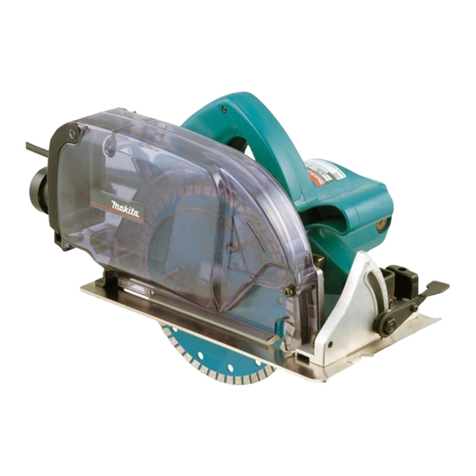
Makita
Makita 4157KB instruction manual
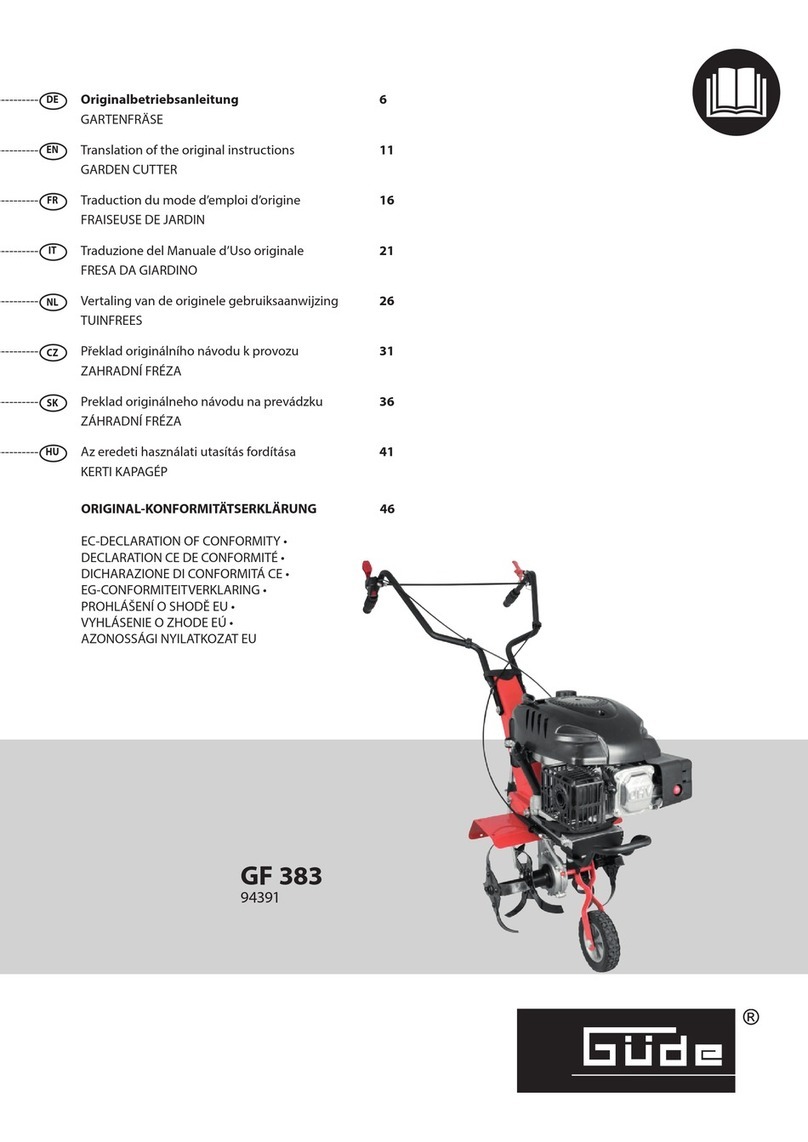
Gude
Gude GF 383 Translation of the original instructions
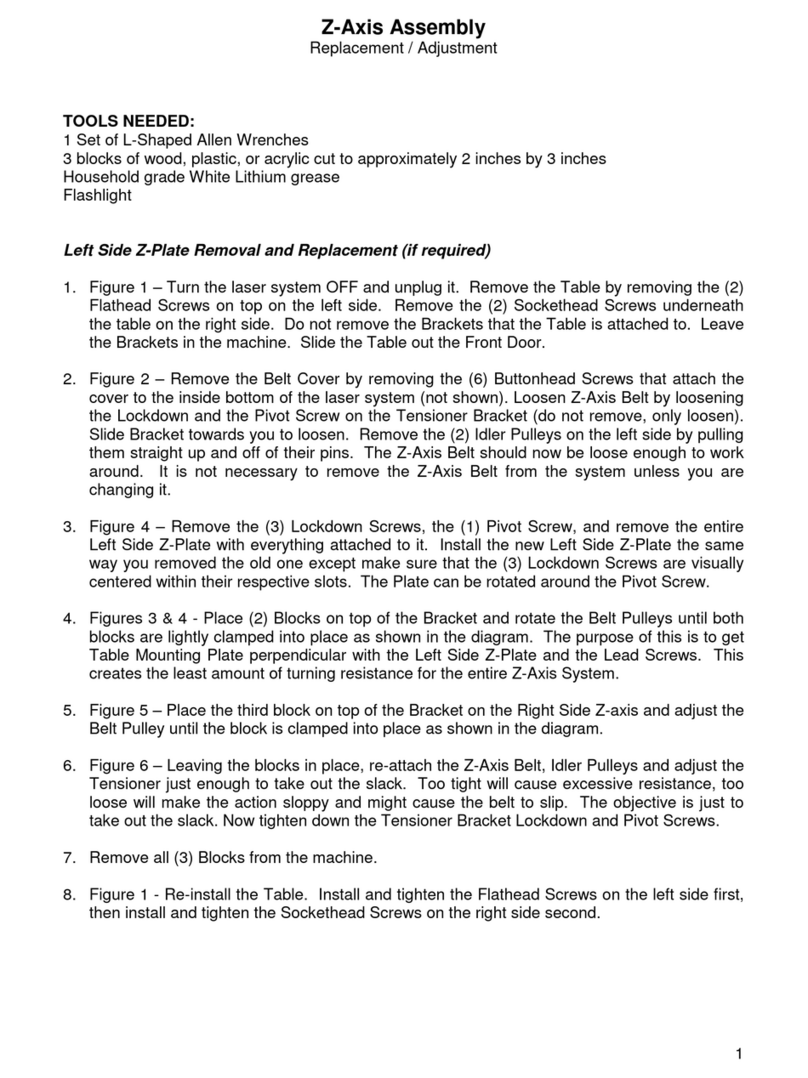
Universal Laser Systems
Universal Laser Systems Z-Axis Assembly instructions

BN Products
BN Products DBC-16H manual
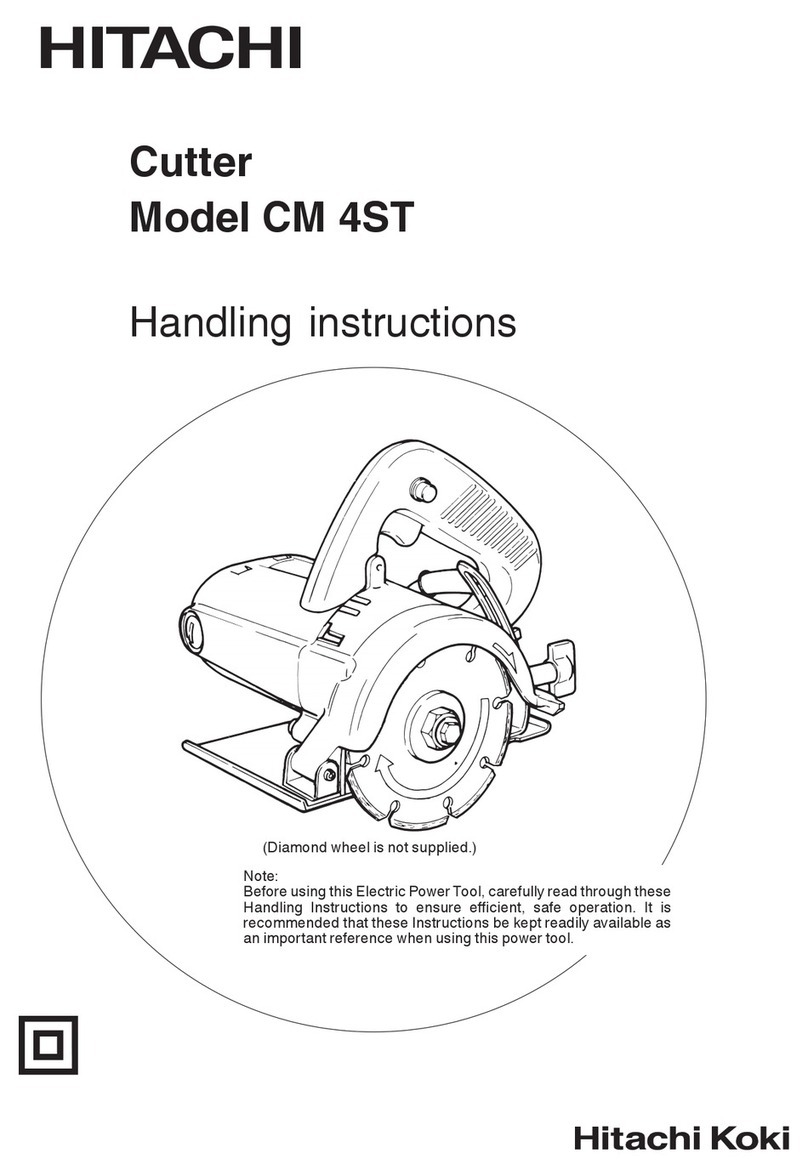
Hitachi Koki
Hitachi Koki CM 4ST Handling instructions

Bosch
Bosch Professional GSC 18V-16 Original instructions

Textron
Textron Greenlee ES25 instruction manual
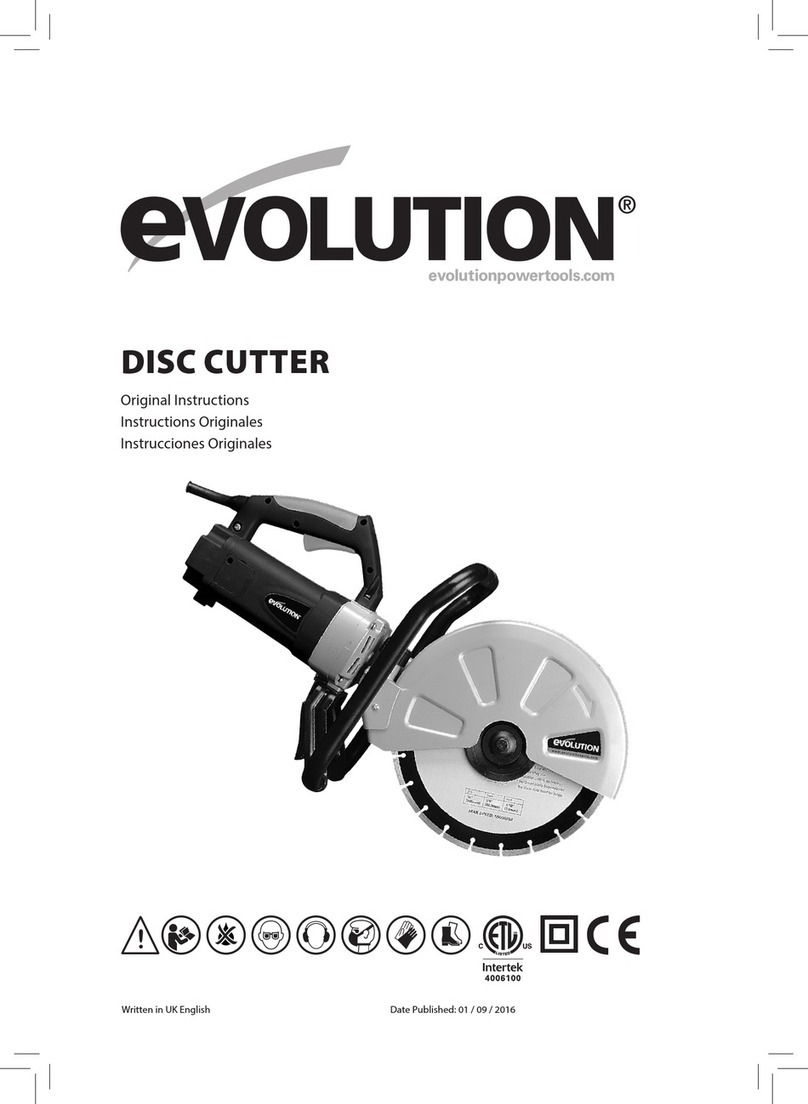
Evolution
Evolution DISCCUT1 Original instructions
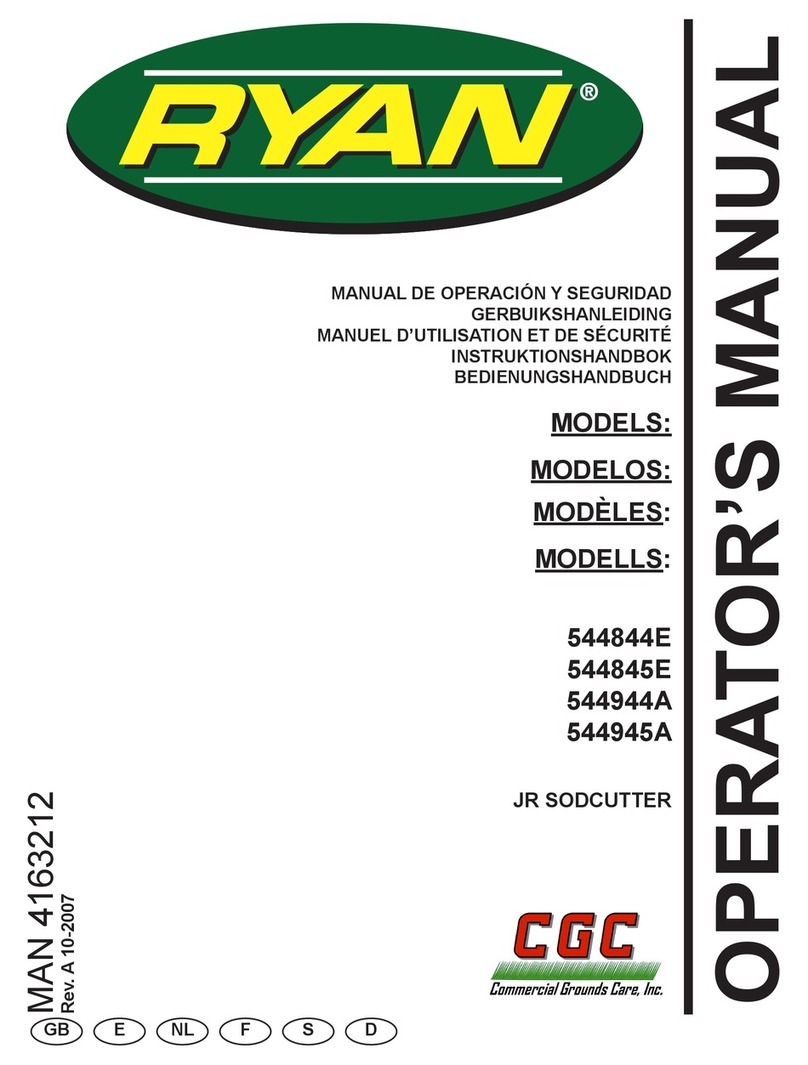
CGC
CGC RYAN JR SODCUTTER 544844E Operator's manual

Baileigh Industrial
Baileigh Industrial PT-105HD Operator's manual
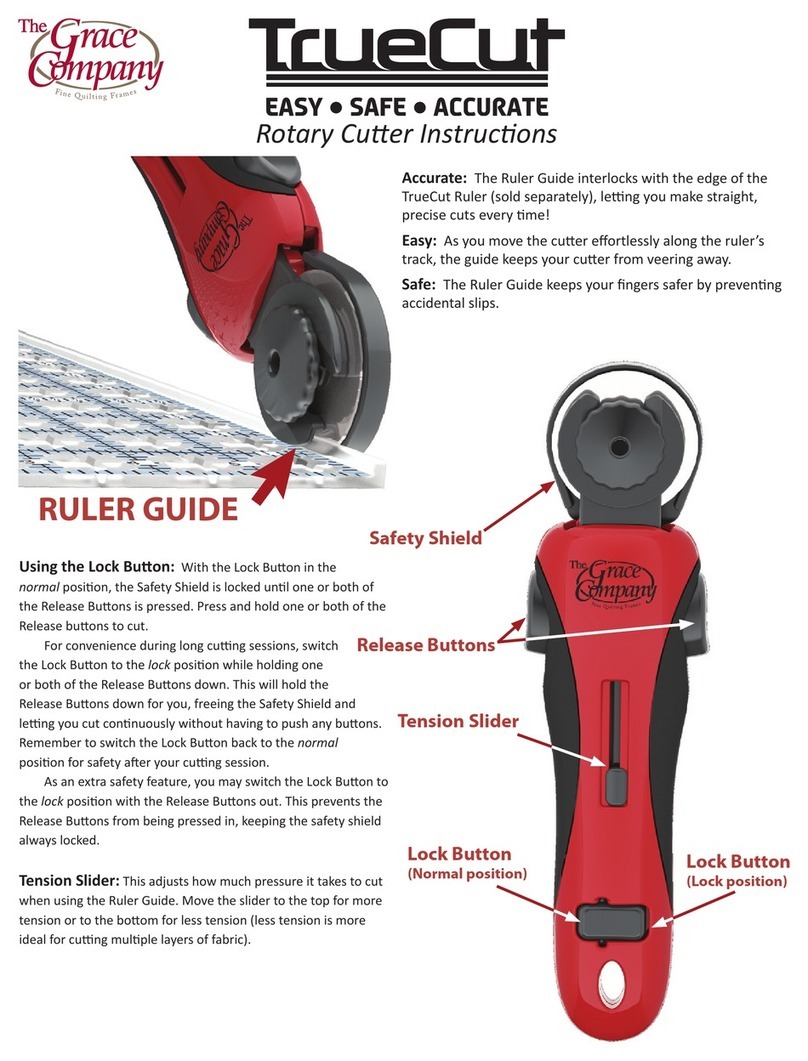
Grace Company
Grace Company TrueCut instructions
